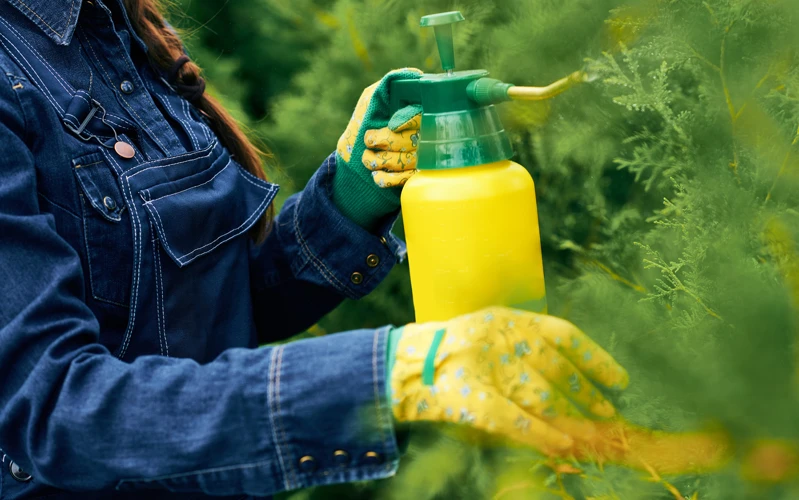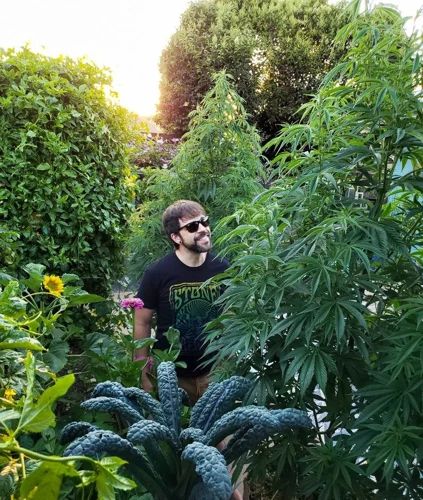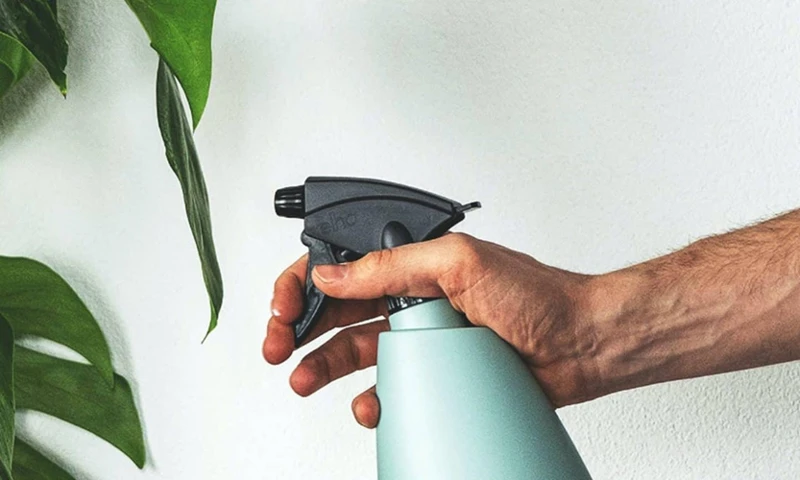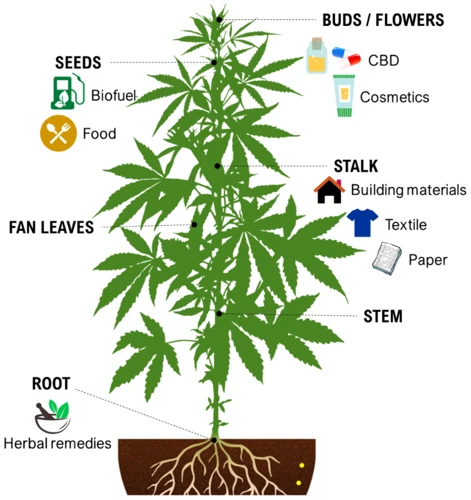
Foliar Feeding 101: Techniques and Tips for Effective Cannabis Growth
Introduction
Contents
Foliar feeding is a plant nutrition technique that involves applying nutrients directly to the leaves of a plant. This method has gained popularity in recent years among cannabis growers who are looking for ways to maximize their plant’s potential. While it may seem like a simple process, foliar feeding requires proper technique and timing to achieve the desired results. In this article, we will discuss the benefits of foliar feeding, when to use it, how to apply it, and tips for effective and successful cannabis growth.
What is Foliar Feeding?
Foliar feeding is a technique used to deliver plant nutrients directly to the leaves of the cannabis plant. This is done by spraying a nutrient-rich solution onto the leaves of the plant, allowing the leaves to absorb the nutrients through their stomata. This is in contrast to traditional feeding methods, such as soil drenching or hydroponics, which rely on the plant’s roots to absorb nutrients.
Advantages of Foliar Feeding:
- Foliar feeding allows for more efficient nutrient absorption since the nutrients are absorbed directly through the leaves.
- This method can help plants recover from nutrient deficiencies more quickly than traditional feeding methods.
- Foliar feeding can help quickly correct nutrient imbalances and improve plant health.
- Foliar feeding is useful for delivering specific micronutrients, such as iron or magnesium, to plants that require them.
Disadvantages of Foliar Feeding:
- This method can be time-consuming since it requires individual attention to each plant.
- If done improperly, foliar feeding can lead to nutrient burn, which can damage or even kill plants.
- Foliar feeding should not be relied on as the sole source of nutrients for plants, as it can lead to slower growth rates and lower yields.
Foliar feeding can be a useful tool for cannabis growers looking to supplement their plant’s nutrient intake, but it should be used in conjunction with other feeding methods and with caution to avoid damaging plants.
Benefits of Foliar Feeding
Foliar feeding is a technique that is highly beneficial to cannabis plants, especially when used in conjunction with traditional root feeding methods. The benefits of foliar feeding are many and include:
| Increased Nutrient Uptake | Foliar feeding allows nutrients to be absorbed directly through the leaves of the plant, allowing for faster and more efficient nutrient uptake. |
| Better Nutrient Distribution | Since foliar feeding delivers nutrients directly to the plant’s leaves, it allows for more even and balanced nutrient distribution throughout the plant. |
| Improved Plant Health | When used correctly, foliar feeding can improve the overall health and vitality of cannabis plants, leading to heavier yields, stronger plants, and healthier buds. |
| Faster Recovery from Nutrient Deficiencies | If a cannabis plant is suffering from a nutrient deficiency, foliar feeding can provide a quick and effective solution, allowing the plant to quickly recover and get back on track. |
| Reduced Risk of Nutrient Burn | When used properly, foliar feeding poses little risk of nutrient burn, as the plant is able to absorb only as much nutrients as it needs. |
Foliar feeding is a simple yet highly effective technique that can provide cannabis growers with numerous benefits for their plants, leading to bigger, healthier, and stronger yields.
When to Foliar Feed
Determining the appropriate time to utilize foliar feeding in your cannabis growth process can be a daunting task. It is critical to understand when your plants will benefit the most from receiving nutrients through their leaves, and when doing so may prove to be detrimental. By following a few simple guidelines for the vegetative and flowering stages, you can ensure that you are providing your plants with the optimal nourishment during their growth cycle.
Vegetative Stage
The vegetative stage of cannabis growth is an important time for foliar feeding as it is when the plant is focused on developing leaves and stems. During this stage, it is recommended to foliar feed every 5-7 days with a balanced nutrient solution. Here are some tips for effective foliar feeding during the vegetative stage:
- Choose the Right Nutrients: Look for a nutrient solution that is high in nitrogen, as this is essential for leaf and stem growth. A balanced nutrient mixture with an NPK ratio of 3-1-2 is ideal.
- Mix Correctly: Mix the nutrient solution according to the instructions on the label. Use filtered or distilled water, as tap water can contain minerals that can damage the leaves.
- Apply Evenly: Use a spray bottle with a fine mist nozzle to apply the nutrient solution evenly to the leaves. Be sure to cover both the top and bottom of each leaf.
- Monitor for Nutrient Deficiencies: Keep an eye on the plant for any signs of nutrient deficiencies, such as yellowing or browning of the leaves. Adjust nutrient levels as needed.
- Provide Adequate Lighting: Ensure the plant is receiving enough light to promote photosynthesis, which is essential for healthy growth during the vegetative stage.
- Avoid Overfeeding: While it may be tempting to feed the plant more, overfeeding can lead to nutrient burn and damage the plant.
Following these tips can help promote healthy growth and prepare the plant for the flowering stage.
Flowering Stage
During the flowering stage, foliar feeding is especially important for cannabis plants as it can help to support their energy-intensive reproductive process. Here is a table to outline the recommended nutrients and frequency of foliar feeding during this stage:
| Nutrient | Frequency |
|---|---|
| Calcium and Magnesium | Every other watering |
| Boron | Once a week |
| Phosphorus and Potassium | Every two weeks |
During the flowering stage, it is important to make sure that the nutrients used for foliar feeding are specifically formulated for this stage. An excess of certain nutrients, such as nitrogen, can negatively affect the quality of the buds. Foliar feeding during the flowering stage should be done early in the morning or late in the evening to avoid interfering with the natural light cycle of the plants.
It is important to note that foliar feeding should not be relied upon solely during the flowering stage. The plants should still be receiving regular feedings through their root system to support healthy growth and yields. Using foliar feeding as a supplemental technique can help to augment the overall health of the plants and promote the development of high-quality buds.
How to Foliar Feed
If you are looking to enhance the growth of your cannabis plants, foliar feeding is a technique that can help provide them with the necessary nutrients. It involves spraying a nutrient solution directly onto the leaves of the plants, allowing them to absorb the nutrients quickly and efficiently. In this section, we will discuss the materials needed and step-by-step process for mixing and applying the nutrient solution for effective foliar feeding.
Materials Needed
In order to foliar feed your cannabis plants, you will need to gather a few essential materials. These include:
| Foliar spray nutrients: | A high-quality foliar spray nutrient that contains all the essential macronutrients (N, P, K) and micronutrients (Ca, Mg, S) that cannabis needs for healthy growth. |
| Spray bottle: | A clean spray bottle that is capable of producing a fine, even mist. Look for a bottle that has an adjustable nozzle that can be set to produce a fine mist. |
| pH tester: | A pH tester is essential to ensure that the foliar spray nutrient is at the correct pH range. The optimal range is between 5.5 and 6.5 on the pH scale. |
| pH adjuster: | If the pH of the foliar spray nutrient is outside the optimal range, a pH adjuster will be needed to bring it back within range. Common pH adjusters include citric acid or baking soda. |
| Clean water: | You will need clean water to mix with the foliar spray nutrient and to spray onto your plants. Avoid using tap water, as it may contain harmful chemicals such as chlorine that can damage your plants. |
| Protective gear: | It is important to wear gloves and safety goggles when mixing and applying foliar spray nutrients. This will help to avoid skin irritation or splashes in your eyes. |
By ensuring that you have all of the necessary materials on hand, you can rest assured that your foliar feeding technique will be effective and safe for your plants.
Mixing and Applying Nutrients
Mixing and applying nutrients for foliar feeding is a crucial step to ensure effectiveness and avoid damaging the plants. Here are the steps to follow:
1. Choose the right nutrients: Use high-quality foliar nutrients that are specifically designed for cannabis plants. Choose a formula that is suitable for the stage of growth your plants are in, whether it is the vegetative or flowering stage.
2. Mix the nutrients: Follow the manufacturer’s instructions carefully and mix the nutrients with water in the correct ratio. It is important not to dilute the mixture too much, as this will decrease the nutrient concentration, making it less effective.
3. Use clean water: Use clean, fresh water to mix the nutrients as any impurities can harm the plants.
4. Apply the mixture: Fill the sprayer with the nutrient mixture and apply it evenly to the top and bottom of the leaves. The aim is to cover the entire surface of the leaves with a fine mist, not to drench the plants. Use a gentle spray, as too much pressure can damage the plants.
5. Apply at the right time: Apply the mixture in the early morning or late evening when the temperature is cool and the humidity is high. This allows the plants to absorb the nutrients and avoid damage from direct sunlight.
6. Apply sparingly: Apply the mixture sparingly, aiming for only one or two applications per week. Overfeeding can damage the plants and lead to nutrient burns.
By following these steps, you can ensure that your cannabis plants receive the proper nutrients they need for healthy growth through foliar feeding.
Techniques for Effective Foliar Feeding
As a cannabis grower, it’s important to know the proper techniques for foliar feeding. While this method can provide significant benefits to your plants, it’s important to apply the nutrients effectively to ensure that your plants receive the maximum benefit. In this section, we’ll discuss some techniques that will help you achieve effective foliar feeding. By implementing these techniques, you can increase the overall health and yield of your cannabis plants.
Proper Time of Day
Proper Time of Day for Foliar Feeding
The time of day that foliar feeding is performed can have a significant impact on its effectiveness. It is important to choose the right time of day to ensure that the plants are able to absorb the nutrients and take advantage of the benefits of foliar feeding.
It is generally recommended to perform foliar feeding in the early morning or late afternoon, when temperatures are lower and the sun is not at its strongest. This allows the plant to absorb the nutrients without the risk of burning or stressing the leaves.
Table:
| Time of Day | Advantages | Disadvantages |
|---|---|---|
| Early Morning | Lower temperatures, higher humidity | May be damp from dew or fog |
| Late Afternoon | Lower temperatures, less intense sunlight | Risk of leaves drying out before absorption |
Early morning is generally considered the best time of day for foliar feeding, as the plants will have had all night to rest and recover from any stresses of the previous day. The lower temperatures and higher humidity can help to keep the leaves moist and improve nutrient absorption. However, it is important to note that there may be dampness on the leaves from dew or fog, which can dilute the nutrients or make them less effective.
Late afternoon is also a good time for foliar feeding, as the temperatures are lower and the sun is less intense. However, it is important to ensure that the leaves do not dry out before the nutrients can be absorbed. If the leaves are too dry, the nutrients may not be able to penetrate the surface and reach the plant’s cells.
Choosing the proper time of day for foliar feeding can make a significant difference in the effectiveness of the process. By being mindful of the advantages and disadvantages of early morning and late afternoon, growers can ensure that their plants receive the maximum benefits from foliar feeding.
Adjusting Spray Nozzle
When foliar feeding cannabis, it’s important to adjust the spray nozzle properly in order to achieve optimal coverage and prevent wastage of nutrients. Here are some tips for adjusting the spray nozzle:
| Tip | Description |
|---|---|
| Choose the right nozzle size | Selecting the appropriate nozzle size is important, as it determines the amount of liquid released during spraying. A nozzle with a fine mist spray pattern is ideal for foliar feeding. Make sure to choose a nozzle that is suitable for the type of pump sprayer being used. |
| Adjust the nozzle angle | The angle of the nozzle can affect the coverage and efficiency of the foliar feeding. Aim for a 45-degree angle to ensure that the solution is sprayed in a uniform manner. The nozzle should be adjusted so that the solution is sprayed directly onto the leaves and not the ground. |
| Test the spray pattern | Before beginning to spray, test the spray pattern by holding the sprayer over a piece of cardboard or paper. This will help to determine if the nozzle is adjusted properly and if any adjustments need to be made. The spray pattern should be fine and even. |
The proper adjustment of the spray nozzle is crucial to ensure that the nutrients are being applied uniformly, without wasting any of the precious mixture. By following these tips, growers can optimize their foliar feeding technique to maximize the growth and health of their cannabis plants.
Rotating Spray Pattern
When foliar feeding, it’s important to ensure that the nutrients are being evenly distributed across the leaves. One effective technique for achieving this is by rotating the spray pattern as you apply the foliar spray.
To do this, start by spraying the leaves in one direction, then switch to another direction for the next pass. For example, if you start spraying from the top of the plant and move downwards, on the next pass you can start at the bottom of the plant and move upwards. This helps to ensure that each leaf is being sprayed from different angles, allowing for better coverage and absorption of the nutrients.
Another way to rotate the spray pattern is to adjust the angle of the spray nozzle. For example, you can start by spraying the leaves from a 45 degree angle, then switch to a 90 degree angle for the next pass. This can help to ensure that the undersides of the leaves are also being sprayed, which is especially important for nutrient absorption.
Using a rotating spray pattern is a simple yet effective technique for ensuring that your foliar feeding is as effective as possible. It helps to evenly distribute the nutrients across all of the leaves, and can lead to healthier, more vibrant plants.
Top Tips for Successful Foliar Feeding
Now that you understand the importance and benefits of foliar feeding for your cannabis plants, it’s time to explore some top tips to ensure success in this technique. These tips will help you to make the most of your supplements and ensure optimal growth and development of your plants. Implementing these tips will give your plants the best chance of thriving and producing high-quality yields. So, let’s dive into some essential pointers that every grower should follow for successful foliar feeding.
Use High-Quality Nutrients
The quality of the nutrients used for foliar feeding is of utmost importance for the success of the technique. Using low-quality nutrients can have a detrimental effect on the health and growth of the cannabis plants. Here are some tips for selecting and using high-quality nutrients:
- Research Brands: Before purchasing any nutrients, it is important to research brands and products to ensure they are reliable and effective. Look for products that are specifically formulated for cannabis plants and have positive reviews from other growers.
- Check the Ingredients: Look for nutrients that contain a balanced ratio of essential macronutrients such as nitrogen, phosphorus, and potassium, as well as micronutrients like calcium, magnesium, and iron. Avoid products that contain harmful chemicals or additives that can damage the plant or negatively affect the flavor of the buds.
- Follow the Instructions: When using high-quality nutrients, it is important to follow the instructions carefully to avoid overfeeding or causing nutrient burn. This can lead to stunted growth, yellowing of the leaves, and other issues that can compromise the health of the plant.
- Invest in Organic Nutrients: Organic nutrients are a popular choice for many cannabis growers as they are derived from natural sources and can improve the flavor and aroma of the buds. However, keep in mind that organic nutrients can be more expensive than synthetic options.
- Use Clean Water: When mixing nutrients, it is important to use clean, pH-balanced water to avoid any contamination that can negatively affect the plant. Use a water filter or consider using distilled or reverse osmosis water for best results.
By investing in high-quality nutrients, cannabis growers can ensure the health, yield, and potency of their plants. It is important to research and select the right nutrients for the specific stage of growth and strain of the plant, and to use them in conjunction with proper watering, lighting, and other cultivation techniques.
Avoid Overfeeding
One common mistake that many growers make when it comes to foliar feeding is overfeeding their plants. It’s important to avoid overfeeding because it can lead to nutrient burn, a condition that can damage your plants and hinder their growth.
To avoid overfeeding your plants, you should be mindful of the type and amount of nutrients you’re using. It’s important to only use high-quality nutrients that are specifically formulated for foliar feeding. Using the wrong type of nutrient or mixing the wrong amounts can lead to overfeeding.
Table: Tips to Avoid Overfeeding
| Tips | Explanation |
|---|---|
| Follow recommended dosage | Read the instructions carefully and measure the nutrients accurately to avoid overfeeding. |
| Use a low-concentration mix | Start with a small concentration of nutrients and work your way up gradually. |
| Monitor your plants | Observe your plants for any signs of nutrient burn and adjust your feeding accordingly. |
Another way to avoid overfeeding is to monitor your plants closely for any signs of nutrient burn, such as yellowing or browning of the leaves. If you notice these signs, reduce the concentration or frequency of your foliar feeding.
In general, it’s better to err on the side of caution when it comes to foliar feeding. Start with a low concentration and gradually work your way up, monitoring your plants along the way. With proper care and attention, you can avoid overfeeding and ensure healthy and vigorous growth in your cannabis plants.
Don’t Spray in Direct Sunlight
One of the most important things to keep in mind when foliar feeding your cannabis plants is to avoid spraying them in direct sunlight. This is because the combination of the sun’s rays and the water droplets on the leaves can create a magnifying glass effect, which can burn the leaves of your plants.
Even if you use high-quality nutrients and mix them correctly, spraying your plants during the hottest part of the day can undo all your hard work and damage your crops. Additionally, spraying during the hottest part of the day will cause the water to evaporate too quickly, reducing the amount of nutrients that actually get absorbed by your plants.
To ensure the best results, schedule your foliar feeding for late afternoon or early morning when the sun is less intense. This way, the water droplets will have time to evaporate before the sun becomes too hot, and the nutrients will be more effectively absorbed by your plants.
If you’re unsure about when to schedule your foliar feeding, use a shade cloth to protect your plants from the sun’s rays. This is especially important during the hotter months when the sun is more intense. A shade cloth can also provide additional protection from pests and insects that may be attracted to the water droplets on your plants.
Overall, avoiding direct sunlight during foliar feeding is crucial for the health and growth of your cannabis plants. By following this precaution, you can ensure that your plants receive all the benefits of the nutrients you provide them, without risking damage from the sun.
| Avoid Spraying in Direct Sunlight |
| • Can cause a magnifying glass effect, burning the leaves of your plants |
| • Water can evaporate too quickly, reducing the amount of nutrients absorbed |
| • Schedule foliar feeding for late afternoon or early morning |
| • Use a shade cloth for extra protection during hotter months |
| • Avoiding direct sunlight is crucial for the health and growth of your cannabis plants |
Precautions and Considerations
As with any cannabis cultivation technique, it’s important to approach foliar feeding with caution and careful consideration. While it can be an effective way to deliver nutrients to your plants, there are also risks involved. Taking the proper precautions and considering some key factors can help ensure that your foliar feeding efforts are successful and don’t cause any harm to your plants. Keep reading to learn about some of the most important precautions and considerations to keep in mind when foliar feeding.
Start Slowly
When it comes to foliar feeding cannabis plants, it’s important to start slowly and with caution. Here are some tips to help you get started without damaging your plants:
- Begin with a low concentration: It’s recommended to start with a solution that has a concentration of 1/4 or 1/2 strength of what is recommended on the nutrient label. This will allow you to see how your plants react to the nutrients without causing any harm.
- Observe plant reaction: After spraying, observe the plants for a few days to see if there are any signs of damage or stress. If the plants appear healthy and respond well, you can gradually increase the strength of the solution.
- Don’t overdo it: Remember that foliar feeding is meant to supplement your plants’ regular feeding schedule, not replace it entirely. Overfeeding can cause burn or other adverse effects in your plants, so it’s essential to use nutrients in moderation.
- Adjust as necessary: If you notice any adverse effects, such as browning or wilting, immediately discontinue foliar feeding and adjust your feeding regimen accordingly.
By starting slowly, you can avoid causing any harm to your plants and achieve the desired results with safe and effective foliar feeding.
Test on One Plant First
Before foliar feeding your entire crop, it’s important to test it on just one plant first. This will help you determine whether your plants can tolerate the solution you are using and whether there are any negative effects such as burning, spotting, or other damage. Performing a test run is especially important if you are using a new nutrient solution or you’ve changed the strength of your solution.
To do a test run, choose one healthy plant that is representative of the rest of the crop. Apply the nutrient solution to the leaves using the same method and amount that you plan to use for the rest of the crop. Keep an eye on the plant for the next 24 to 48 hours to see how it reacts to the solution.
If the plant shows no signs of damage after this time, it’s safe to assume that the rest of your plants will be able to tolerate the solution as well. However, if you notice any negative effects, you may need to adjust the strength of the solution or try a different nutrient solution altogether.
It’s important to remember that each plant is unique, and what works for one may not work for others. This is why testing your nutrient solution on just one plant first is a crucial step in ensuring the health and growth of your entire crop.
Below is a table summarizing the steps for performing a test run on one plant:
| Step | Description |
|---|---|
| 1 | Choose one healthy plant that is representative of the rest of the crop |
| 2 | Apply the nutrient solution to the leaves using the same method and amount that you plan to use for the rest of the crop |
| 3 | Observe the plant for the next 24 to 48 hours to see how it reacts to the solution |
| 4 | If there are no negative effects, it’s safe to assume that the rest of your plants will be able to tolerate the solution as well. If negative effects are observed, adjust the strength of the solution or try a different nutrient solution altogether. |
Do Not Use on Sick or Stressed Plants
It’s crucial to remember that foliar feeding is not a cure-all solution for sick or stressed plants.
Here are some considerations to keep in mind:
- Foliar feeding should only be carried out on healthy plants with no signs of stress or disease.
- If the plant is already nutrient deficient, it’s better to address the issue at the root level since foliar feeding will not provide significant benefits in such cases.
- Sick or nutrient-deficient plants should be treated appropriately, and their health should be improved before considering foliar feeding.
If the plant is already stressed from environmental factors such as high temperatures, humidity, or pests, foliar feeding can further stress it out and cause more harm than good.
Thus, it’s essential to:
- Observe your plants’ health regularly and identify any concerning symptoms.
- Address any issues or deficiencies at the root level before turning to foliar feeding.
- Avoid foliar feeding in case of sick or stressed plants to avoid any further harm or stress to the plant.
Remember, prevention is always better than a cure, and it’s better to keep your plants healthy and stress-free with proper care and nutrition than to attempt to “fix” issues with foliar feeding.
Conclusion
In conclusion, foliar feeding can be a great addition to your cannabis growth regimen if done correctly. While it may not replace traditional soil feeding methods, it can certainly supplement and enhance them for optimal plant growth.
However, it is important to approach foliar feeding with caution and care. Starting slowly and testing on just one plant at first can help ensure that your plants will respond positively and without adverse effects. Additionally, avoid using foliar feeding on sick or stressed plants, as it could do more harm than good.
When done properly, foliar feeding can provide numerous benefits for your cannabis plants, including improved nutrient uptake and faster growth. Be sure to use high-quality nutrients and avoid overfeeding, as this can lead to nutrient burn and other issues.
Remember to foliar feed during the appropriate time of day, adjust the spray nozzle and rotate the spray pattern for even coverage, and avoid spraying in direct sunlight.
By following these techniques and tips, you can successfully incorporate foliar feeding into your cannabis growth routine and enjoy healthier, more robust plants.
Frequently Asked Questions
Can foliar feeding replace soil fertilization?
No, foliar feeding should be used in addition to soil fertilization, not as a replacement. Soil fertilization provides essential nutrients and minerals to the plant’s root system, while foliar feeding can provide supplemental nutrients directly to the leaves.
What nutrients are best for foliar feeding?
Iron, magnesium, and calcium are commonly used for foliar feeding, but it depends on the specific needs of your plants. Consult with a knowledgeable grower or use a nutrient analysis to determine what specific nutrients your plants require.
Can I foliar feed in the flowering stage?
Yes, foliar feeding can still be beneficial in the flowering stage. However, it’s important to avoid spraying any buds directly as this can negatively impact the final product’s flavor and quality.
What is the best time of day to perform foliar feeding?
Early morning or late afternoon is the ideal time to perform foliar feeding. This is when temperatures are cooler, and the leaves will have more time to absorb the nutrients before the heat of the day.
Can I foliar feed my outdoor plants during rain?
No, it is not recommended to foliar feed during rain as the nutrients will not be effectively absorbed and may instead wash away. Wait until a dry day to perform foliar feeding.
How frequently should I foliar feed my plants?
The frequency of foliar feeding depends on the specific needs of your plants. It’s important to monitor for signs of nutrient deficiencies or excess and adjust your feeding schedule accordingly. As a general rule, foliar feeding can be done every 2-3 weeks.
Is foliar feeding more effective than root feeding?
No, foliar feeding and root feeding have their own unique advantages and should be used in combination to provide complete nutrition to the plant. Root feeding provides essential nutrients to the plant’s root system, while foliar feeding provides supplemental nutrients that can be rapidly absorbed by the leaves.
What is the ideal temperature for foliar feeding?
The ideal temperature range for foliar feeding is 60-80°F (15-27°C). Higher temperatures may cause the liquid to evaporate too quickly, while lower temperatures may slow down the absorption process.
Can I use tap water for foliar feeding?
It’s not recommended to use tap water for foliar feeding as it can contain chlorine and other chemicals that may harm the plant. Use filtered or distilled water instead.
What should I do if I accidentally spray a nutrient solution on budding flowers?
If you accidentally spray a nutrient solution on budding flowers, gently wipe away the excess liquid with a damp cloth. Be careful not to disturb the flowers too much to avoid damaging them.







